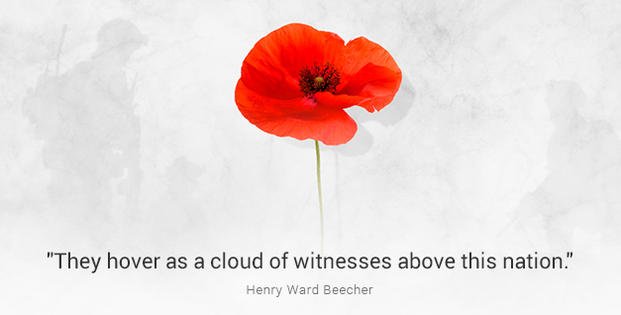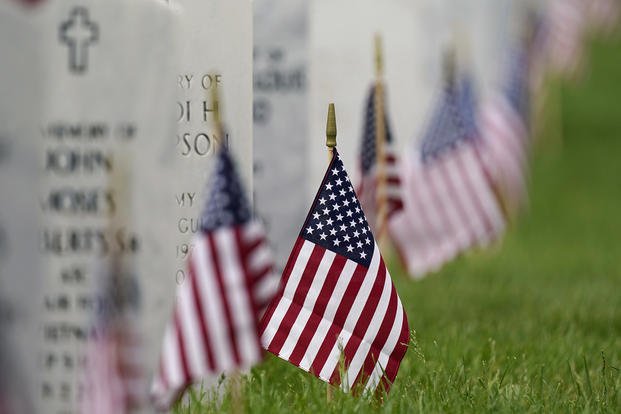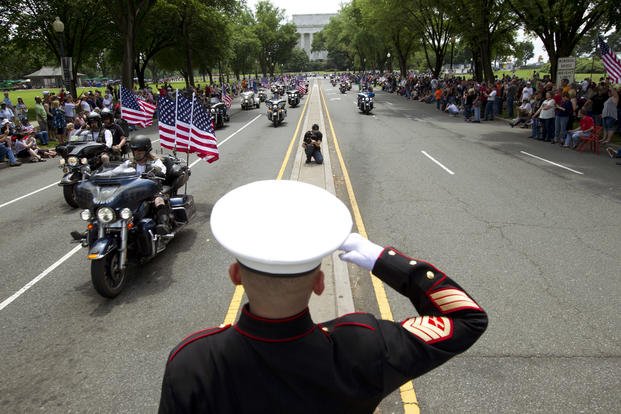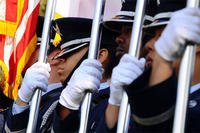
Military.com | By Tiffini Theisen
What Is Memorial Day?
Observed the last Monday in May, Memorial Day honors those who lost their lives while in service to the United States during peace and war.
Memorial Day 2023 is on Monday, May 29.
Memorial Day is not a celebration, but is a solemn day to reflect on veterans and military personnel who are deceased.
Whom Do We Remember on Memorial Day?
Memorial Day originally honored the Civil War dead, and now honors all service members and veterans who died while in service to the United States during peace and war. This includes the 12 major wars the United States has fought, in addition to other conflicts.
Read More: Memorial Day vs. Veterans Day: Here's the Difference

History of Memorial Day
Memorial Day was previously known as Decoration Day, although especially in the South, the observance was also commonly called "Memorial Day" from the very beginning, in the 1860s.
In 1865, one of the earliest Memorial Day commemorations -- perhaps the very first -- was organized by formerly enslaved people in Charleston, South Carolina, according to newspaper reports from that time. That was at least a year before other U.S. cities held similar events.
It wasn't until three years later, however, that the observance officially began, in May 1868. It was known as "Decoration Day" from the practice of using spring flowers to decorate the gravesites of men who died while serving in the Civil War.

Outside the nation's capital, the first official Decoration Day was May 30, 1868. At Arlington Cemetery, thousands of people gathered as flowers were placed on the graves of Union soldiers. Church members had spent days arranging the buds into wreaths, crosses and bouquets for the occasion. Black banners were wound around the pillars of the veranda to mark the solemn event.
John A. Logan, a former Civil War general who led an organization for Northern Civil War veterans, suggested the end of May as the time of year for the observance, possibly because flowers would be in bloom nearly everywhere across the U.S.
The observance of Decoration Day, including at ceremonies in most major cities, spread throughout the country by the late 1800s. These events typically featured parades, speeches and other events meant to honor the Civil War dead.
In 1919-20, after World War I, newspapers ran editorials calling for Decoration Day to also commemorate those killed in this Great War, not just those lost in the Civil War. Eventually, of course, the day grew to encompass all veterans and service members who lost their lives.
During the early 1900s, more and more people started to refer to Decoration Day as Memorial Day. But it wasn't until the 1960s that the name change became official.
"Memorial Day" was technically born in Waterloo, New York, in 1966, as President Lyndon B. Johnson declared the new name for the annual observance.
Waterloo was chosen as the birthplace of the day due to a pharmacist of that city who was credited as the first to suggest a formal day to honor the war dead. Henry Welles floated the idea in 1865, as the nation was reeling from the sheer number of lives lost in the Civil War. The nation suffered 600,000 to 800,000 Union and Confederate deaths, about 2% of the total population.
In 2000, a new federal law designated 3 p.m. local time on Memorial Day as the ''National Moment of Remembrance," when Americans are encouraged to observe a minute of silence to remember service members and veterans who have died.
Memorial Day Traditions
Annually at Arlington National Cemetery, the president of the United States speaks during a ceremony at the Amphitheater. Numerous military and government organizations also conduct services.
In Washington, D.C., the National Memorial Day Parade, hosted by the American Veterans Center, proceeds down Constitution Avenue on Monday afternoon and is broadcast live on all the major networks.
Nearby, the Vietnam Veterans Memorial Fund Annual Observance at The Wall includes a wreath-laying and ceremony.

A National Memorial Day Concert, set this year for the evening of Sunday, May 28, is livestreamed on PBS. The 2022 event was broadcast live from the West Front of the United States Capitol.
Beyond the Washington, D.C., area, Memorial Day is observed in thousands of cities and towns throughout the nation every year. These events often include speakers, flyovers, wreath presentations, color guards, musical performances including the playing of taps, "flags in" ceremonies and more.
Flags are flown at half-staff at some municipal buildings, and wreaths and bouquets can often be seen at private residences.
Unofficially, Memorial Day weekend is widely considered to be the start of the summer season.
Related: 2023 Memorial Day Events
Why Are Red Poppies Worn on Memorial Day?
During World War I, the red poppy became a symbol of veteran sacrifice after a war memorial poem, "In Flanders Field," by soldier John McCrae, a Canadian surgeon.
The famous poem, which McCrae wrote while on the battlefield in 1915, opens with the lines:
In Flanders fields the poppies blow
Between the crosses, row on row,
That mark our place; and in the sky
The larks, still bravely singing, fly
Scarce heard amid the guns below.
After the Ladies Home Journal magazine printed "In Flanders Field," an Athens, Georgia, woman named Moina Michael was inspired in 1918 to make the red poppy a symbol for remembering WWI's fallen soldiers.
The idea caught on, and in the fall of 1920, the American Legion at its convention in Cleveland adopted the red poppy as the memorial flower.
What Does the Red Poppy Symbolize?
Before the advent of modern medicine, healers used plants and herbs to treat patients. Poppy seeds were commonly eaten as a pain reliever, thanks to their traces of morphine and codeine.
After the poem "In Flanders Field" evoked images of swaying poppies, the flower became a symbol of all those who died in WWI and, eventually, in other wars.
The poppy's symbolism spread to include military service in general.
Want to Know More About the Military?
Be sure to get the latest news about the U.S. military, as well as critical info about how to join and all the benefits of service. Subscribe to Military.com and receive customized updates delivered straight to your inbox.

















